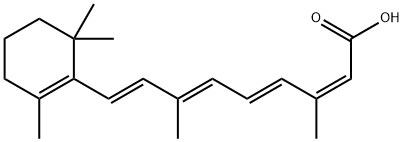Negative photoresist I , 9003-31-0
Synonym(s):
CD220 antigen;insulin receptor;IR;kinase InsR;Poly(1-methyl-1-butene-1,4-diyl)
CAS NO.:9003-31-0
Empirical Formula: C5H8
Molecular Weight: 68.12
MDL number: MFCD00084438
EINECS: 618-362-9
| Pack Size | Price | Stock | Quantity |
| 100ml | RMB759.93 | In Stock |
|
| others | Enquire |
PRODUCT Properties
| Melting point: | 64 °C |
| Boiling point: | 122-142 °C(lit.) |
| Density | 0.92 g/mL at 25 °C |
| refractive index | n |
| Flash point: | >230 °F |
| storage temp. | 2-8°C |
| form | slab/chunk |
| biological source | rabbit |
| λmax | 310-480 nm |
| CAS DataBase Reference | 9003-31-0 |
| EPA Substance Registry System | 1,3-Butadiene, 2-methyl-, homopolymer (9003-31-0) |
Description and Uses
Polyisoprene is the polymer known as natural rubber, although it can also be manufactured. The natural rubber latex is harvested from the rubber tree, Hevea brasiliensis. This substance has a variety of natural additives, such as proteins and sugars. The polymer from the natural latex is resistant to many solvents and also is easily processed. The synthetic form of this rubber is produced from a pure isoprene solution with a stereospecific isomer to produce the more commonly used cis-l,4 isomer. These rubbers are resistant to abrasion and most solvents and are commercially used in automobile tires, adhesives, and a variety of products that come in close contact with the general public. Their use in baby bottle nipples is a good indication of the extremely low toxicity associated with these elastomers.
Natural rubber is a vital, strategic, and irreplaceable raw material used in enormous quantities by the commercial, medical, transportation, and defense industries. At least 40,000 different products and over 400 medical devices contain natural rubber.
Safety
| Symbol(GHS) |    GHS02,GHS07,GHS08 |
| Signal word | Danger |
| Hazard statements | H226-H304-H312+H332-H315-H335-H360FD-H412 |
| Precautionary statements | P210-P273-P280-P301+P310-P303+P361+P353-P331 |
| Hazard Codes | T |
| Risk Statements | 60-61-10-20/21-38 |
| Safety Statements | 24/25-7/9-45-36/37-16-53 |
| RIDADR | UN 1307 3/PG 3 |
| WGK Germany | 3 |
| RTECS | VL8020000 |
| TSCA | TSCA listed |
| Hazardous Substances Data | 9003-31-0(Hazardous Substances Data) |






